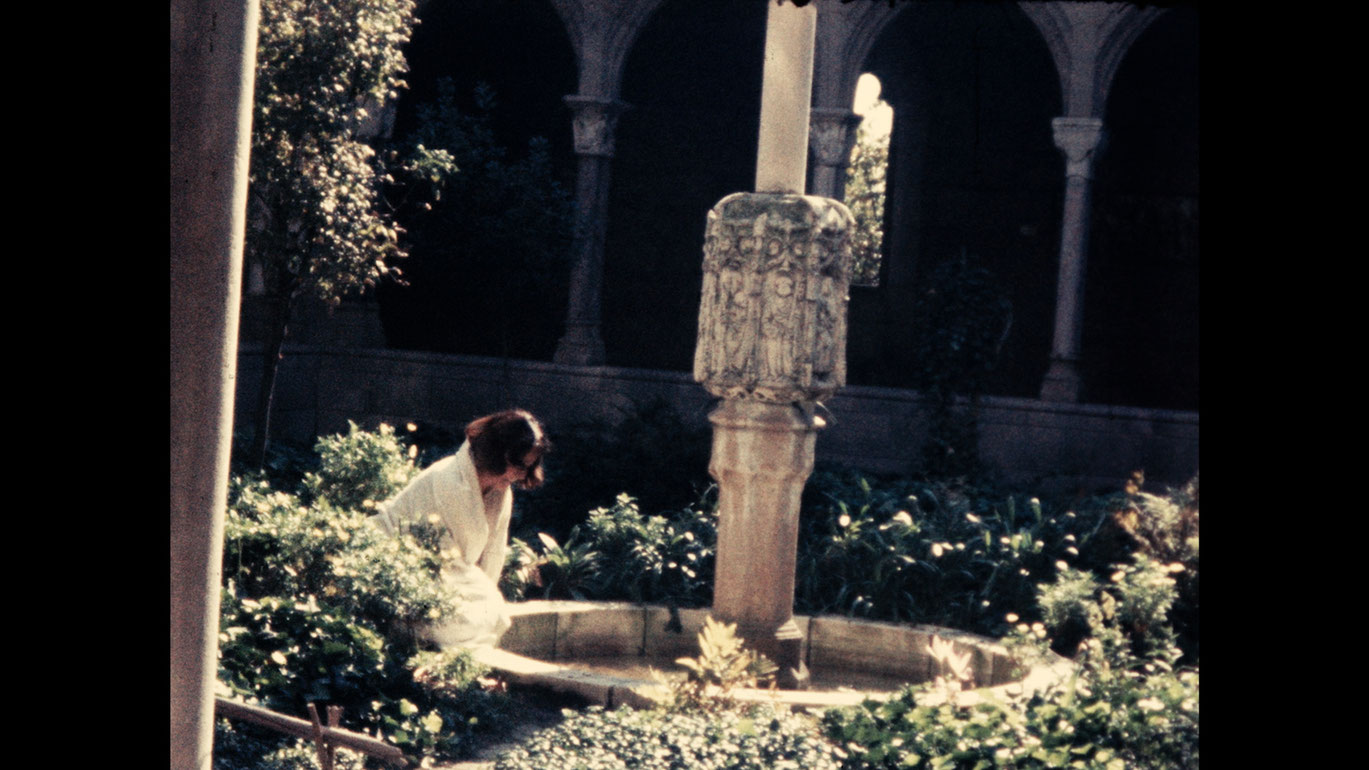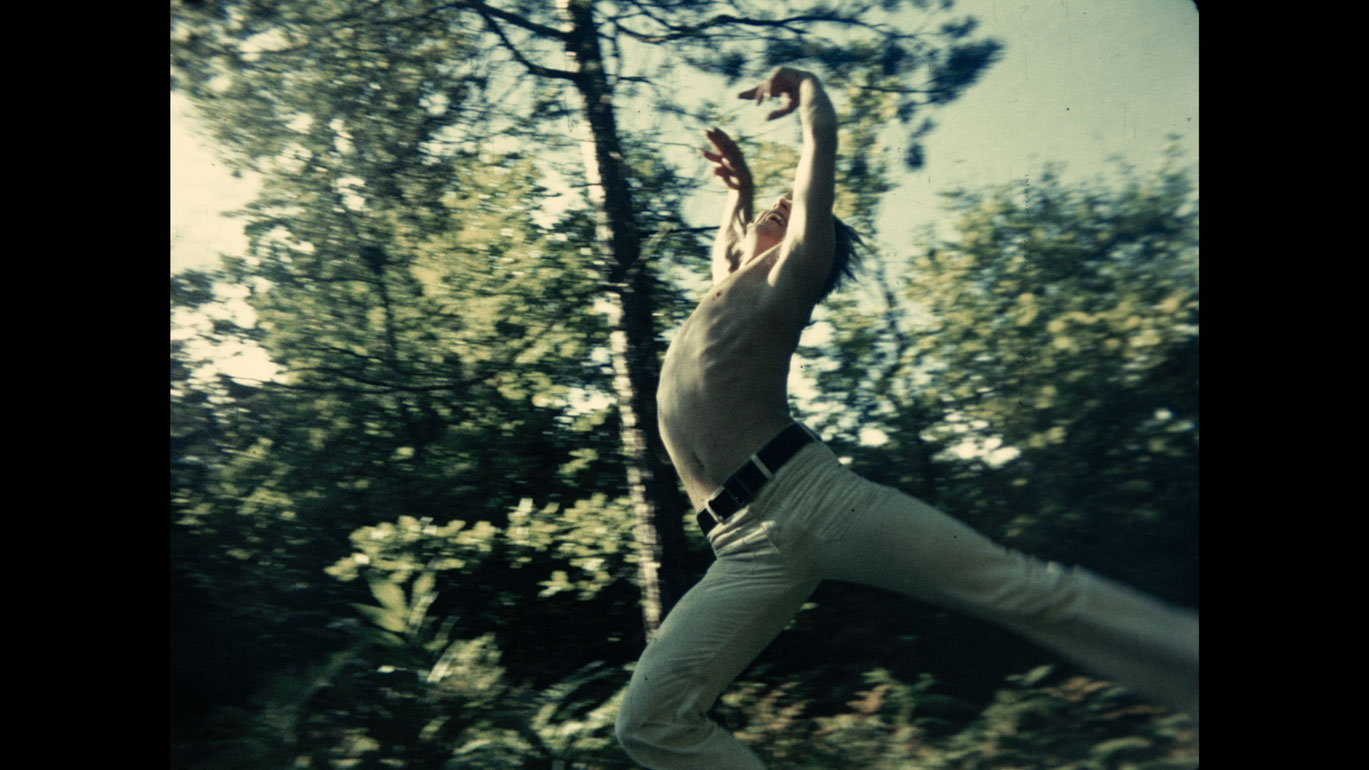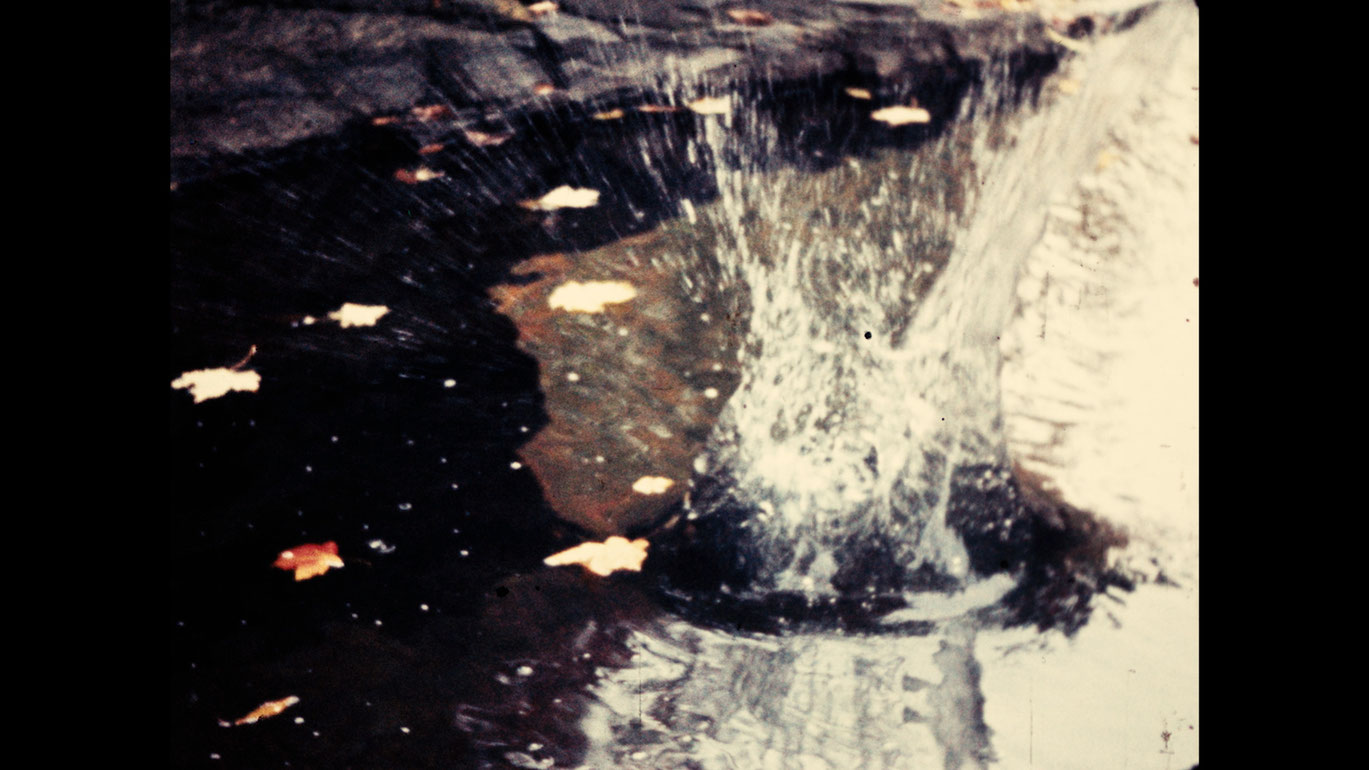Autumn Thoughts [Films in Progress]
Autumn Thoughts joins other films like Fairytale and Black Dancer as films in which movement and dance conveys psychological states. Lassnig gazes forlornly into a fountain in an abbey’s cloistered courtyard, the camera offering her perspective in close-ups of the water’s surface studded with fallen leaves. She is swaddled in white, lending her an ancient, almost inanimate quality. Once outside the cloister and in the woods, Lassnig’s attire transforms into a tightly wound straight-jacket that restricts her movement. A hybrid between classical Greek statuary and a zombified mummy raised from the dead, Lassnig trudges along with difficulty, limping and shuffling in dirty white sneakers, a labored picture of aging and adulteration.
Structured like a duet, the film alternates between these piteous views of Lassnig and buoyant sequences featuring a sprightly, male dancer. He leaps and pirouettes with boundless, abundant energy through alpine fields and sun-dappled forest clearings, the picture of youth. First fully dressed, in the midst of his rapturous cavorting, an abrupt cut renders him shirtless, as if puffing up his bare chest with cartoonish male confidence. The camera’s gaze lingers on his beauty, an evocative and desiring female gaze objectifying a male specimen. The more Lassnig struggles, the more the dancer excels, soaring and spinning through the foliage. Lassnig emphasizes his centripetal, magnetic force by speeding the film’s tempo and blurring some of the frames, telegraphing a frenzied, brainless optimism through lofted movements and wide grins.
The film climaxes in a series of staccato cuts: the dancer leaps, Lassnig stumbles, and something, we - presume Lassnig, plunges with a dramatic splash into rippling waters. She resurrects herself in reverse motion, her bindings coming loose as she retreats to her cloisters. This pas de deux between the vain, self-satisfied dancer and the awkward, humiliated Lassnig articulates tensions between youth and age, and perfection and imperfection that mark life’s changing seasons. In one of her film notebooks, Lassnig made a drawing of two figures, one tightly tethered to the other in the same manner of Lassnig’s restrictive garment. Next to this picture of a trapped, confined figure, she wrote the word “relationship,” expressing her suspicion that while coupling strengthens and liberates men, it acutely constricts women who must take on the labors of beauty, domesticity, and love, resources that deplete and diminish in results over time, leaving women to drown in their confinement. (Jocelyn Miller, Maria Lassnig. Film Works/ Filmography)
Rough cut by Maria Lassnig. Color correction and final cut completed posthumously by Mara Mattuschka and Hans Werner Poschauko in accordance with Lassnig’s notes from her notebook on film, “Yom Kippur, 1970s.”
Soundtrack: Jean Sibelius’ Symphony No. 7 in C major, Op. 105 from the artist’s own music collection.
Digitization by the Austrian Film Museum. This film was preserved and restored by the Maria Lassnig Foundation in collaboration with the Austrian Film Museum.



